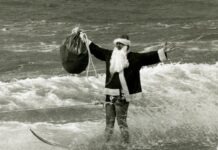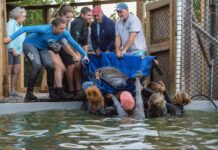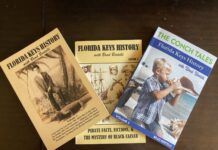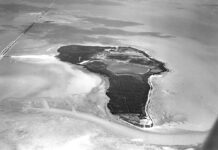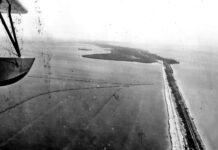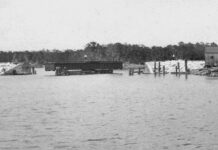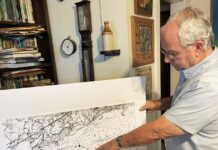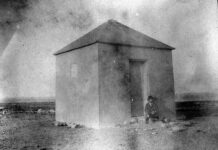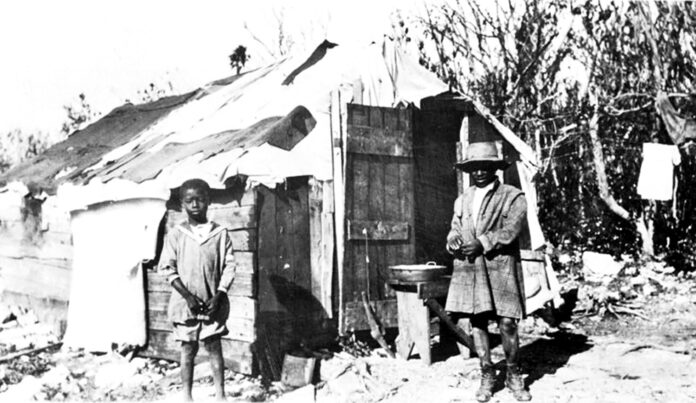
When stories are told about the Florida Keys, Key West gets most of the attention. Given the tremendous history spawned by that little island, it is no surprise.
The Middle Keys are at the other end of the spectrum, as they appear to get the least attention. However, when Spain still owned Florida and the Keys, it seemed like these islands in the middle of the chain were some of the most desirable.
About five years before Florida became a territory of the U.S., the Spanish government granted a friar named Francisco Ferreira ownership of Key Vaca, Boot Key, Viper (Long) Key, Duck Key and Knights Key. Some of those islands fall under the Marathon umbrella today, including the largest of Marathon’s islands, Key Vaca. When the Adams-Onis Treaty was signed in 1819, and the Florida Territory was transferred to the U.S. from Spain, the U.S. government recognized all property transactions that had occurred during Spain’s ownership of the land.
These transactions are called Spanish Land Grants. Any island that was part of a Spanish Land Grant was considered a privately owned island that could be legally bought and sold — providing that a proper paper trail documenting ownership could be provided. The Spanish Land Grants were similar to the Homestead Act of 1862, which awarded up to 160 acres of federal land to anyone who agreed to settle that acreage, live on it for five years, and improve the property.
Both were programs that encouraged pioneers to settle in otherwise wild frontier lands.
In the Florida Keys, there were only a handful of islands that fell into the category known as the Spanish Land Grants. The most famous island in this category was Key West. However, most of the islands associated with Spanish Land Grants were found in the Middle Keys.
According to the Saturday, June 13, 1891, edition of The Democratic Advocate, Key Vaca and the Middle Keys have been passed up in favor of Key West for quite some time: “The first settlement on this archipelago of the gulf was made on Key Vaca about the year 1818 by fishermen from Mystic, Conn. In their fishing excursions they found that Key West, from its deep, spacious harbor and easy access afforded them a better situation. So, they abandoned their primitive and roughly constructed homes and betook themselves to Key West, 50 miles farther Southwest (the most southerly point of Uncle Sam’s dominions,) where they erected new homes and plied their vocations under a tropical sun on the verge of the Gulf Stream.”
It was not the last settlement that would develop on Key Vaca. The small community called Port Monroe was established circa 1822, and a few years later, the more substantial community called Conchtown, home to about 200 people at its zenith, developed on the island. During the second escalation of the Seminole War, however, the threat of Indian warfare, as well as the attack at Indian Key on August 7, 1840, drove most every settler to leave the Upper and Middle Keys. The second escalation of the war began in 1835 and ended in 1842, at which point people began to return to the islands that were largely abandoned during the hostilities.
The May 30, 1851, edition of Scotland’s Glasgow Herald printed a story about the Florida Keys. It made the following observation: “Key West is the only island having any considerable settlement upon it, though Key Vacas and Indian Key and some few others have a few occupants.”
Key Vaca really began to develop after the turn of the century when Henry Flagler’s men began to carve their path down the middle of the island chain. There were small settlements in the Middle Keys before the idea for a train to Key West came to fruition. The small community called Adderley Town (where Crane Point Hammock is today) developed about the same time Flagler’s railroad tracks were being built. Marathon, however, grew up as a railroad town that was cast in the shadow of Key West like every other community that developed along the island chain.
When State Road 4A, the road that became known as the Overseas Highway, was planned, its architects, too, decided to bypass the Middle Keys. When the first version of the highway opened to public transit in 1928, the road stopped at Lower Matecumbe Key in the Upper Keys and picked up again at No Name Key in the Lower Keys. The two points were connected by an automobile ferry that steamed right past Key Vaca and the rest of the Middle Keys.
It was not until the early 1930s that 13.5 miles of road were developed to link two newly created ferry landings, one at Grassy Key and one at Hog Key. When the second incarnation of the Overseas Highway opened in 1938, the Middle Keys were connected to Key West and the mainland by the road. In the interim, Marathon has developed into the heart of the Middle Keys. Next week, we will look beyond Key West and the rest of the island chain and explore more stories of the Middle Keys.


